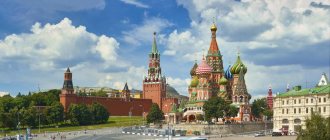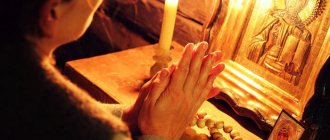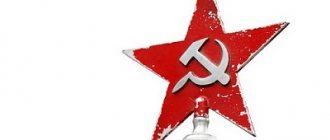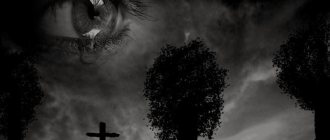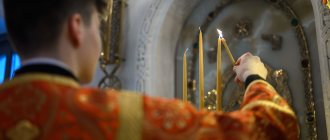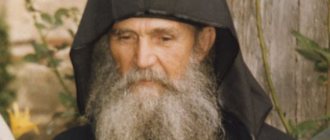More about the camel and the eye of the needle
So, if not everyone, then very many know the words of Jesus Christ about wealth, the camel and the eye of the needle. “It is easier for a camel to go through the eye of a needle than for a rich man to enter the Kingdom of Heaven.” This phrase can be found in all three synoptic evangelists (Matthew 19:24, Mark 10:25, Luke 18:25). The phrase was spoken after the rich young man was very upset when he learned that in order to have eternal life, he must give away his possessions and follow Christ. This one is remembered. And some conclude that the rich cannot be saved, unlike the poor and middle-income people. A large fortune is equated to some kind of sin, which turns out to be an obstacle to salvation, and needs to be gotten rid of.
Examples of people who gave away their wealth (like Seraphim Vyritsky) rather confirm this rule. After all, people have ceased to be rich, and often this is what is imputed to them as righteousness. But among the saints there are also rich martyrs and confessors, such as the holy great martyrs Tatiana, Catherine, Varvara, etc. But, probably, the main examples are Christian rulers like Equal-to-the-Apostles Prince Vladimir.
And these saints may surprise some, since it seems that it is impossible for rich people to be saved.
The fact is that many people forget what followed the famous phrase. And the following followed. The apostles were amazed by this phrase. “They were extremely amazed and said to each other: who can be saved? Jesus, looking at them, said: This is impossible for men...” (Mark 10:26-27) For some reason these words are forgotten. And from them it follows that it is practically impossible not only for the rich to be saved, but for all people in general. Perhaps by that time the Apostles had already eliminated all other people from being saved and only the rich remained, but then it became clear that it was impossible for the rich either. We don't know this. But the fact is that this passage is talking about all people, not just the rich. To understand this, you need to read the passage in its entirety, and not cut off at the most interesting point.
“All saints do what is impossible for humans to do.”
So the surprise is not only that there were rich people among the saints. Any saint is surprising. For all saints do what is impossible for men to do. And when we remember the saints, we remember those who, with God's help, were able to accomplish the impossible.
How are Christians saved? Let's look at the full answer that the Savior gave to the disciples. He said: “With men this is impossible, but not with God, for all things are possible with God” (Mark 10:27). With God's help all things are possible! This is confirmed by the host of saints glorified in our Church!
You can applaud the author (at least 10 times)1
Eye of the needle: versions, opinions, arguments
hole in the wall
Let's first remember how we actually found out about him.
That's right, from the Gospel of Matthew. One famous parable of Jesus Christ ended with these words: “It is easier for a camel to go through the eye of a needle than for a rich man to enter the Kingdom of Heaven.” For a very long time it was not clear what the Savior was talking about. After all, if you discard any metaphor, it will become obvious that going through the eye of a needle is unrealistic. Skip the thread - and no more. But we know that in his parables Jesus always used comparisons and stories from the life of ordinary people, so close and so understandable to his listeners. And it became obvious that the term “eye of the needle” was fraught with something. And so, in 1883, during the so-called “Russian excavations” initiated by Archimandrite Anthony Kapustin, about whom I have written and talked a lot lately, an ancient fragment of the Jerusalem fortress wall was discovered right next to this loophole. With “eyes of a needle”, that is. Now on this site stands the Alexander Metochion of the Imperial Orthodox Palestinian Society. And it is located right next to the Church of the Holy Sepulchre. And above that very “ear” hangs a painting by the famous Russian painter Ilya Efimovich Repin, which is called “Carrying the Cross.”
Repin. Carrying the cross
I described this story a little, talking about the Alexander Metochion. Let me briefly remind you: during his stay in Palestine in 1898, Repin painted the head of the Savior on the painting “Carrying the Cross,” which he had begun before, and handed it over to the Russian church “On Excavations,” inscribing on the back: “This image of Carrying the Cross, painted by me, in the Jerusalem Russian Churches at the Excavations. I would like the image to be embedded under glass and placed low on the left side of the Gate Threshold. I ask you to remember me and my parents – Euthymius and Tatiana – at liturgies. 1898, July (I.E. Repin).” This is the story. But I plan to write about Repin separately.
But let’s return to the phrase from the parable that I cited a little higher. The strange phrase haunted the researchers. There were many different versions of what it could mean. As of today, it seems that agreement has been reached on one opinion that is well known to us. But still, new interpretations arise, which, without finding refutations, still live among the people. Moreover, some Israeli guides sometimes pass them off as versions. That’s why I decided today to talk about some of the interpretations I heard when I was an Israeli.
Probably the most common version is the one I already mentioned. “Eye of a needle” is a narrow gate through which a camel could hardly squeeze through if all its luggage was first removed. By the way, I personally saw this hole and once in my childhood I saw a camel. To be honest, you don’t have to have an excellent eye to doubt that a camel, even bending over strongly, could squeeze into the boundaries allocated by the hole. But who knows... Maybe camels twenty centuries ago were smaller, or maybe the hole was a little wider... A modern camel definitely wouldn’t squeeze into today’s hole.
“You must enter the Kingdom of Heaven freed from all worldly wealth and belongings, pure, unencumbered, having rejected worldly goods.”
Although the guides present this story very vividly and picturesquely. The camel was freed from the luggage loaded on its back, and with difficulty, but always, it squeezed through these narrow gates. And then the owner of the camel manually dragged the luggage through these same gates and again loaded the poor animal. In addition, the analogy is clearly visible here. If we take the Kingdom of Heaven as the “eyes of a needle,” then we must enter it like a camel, freed from all worldly wealth and belongings, clean, unencumbered, having rejected worldly goods. Then, as Jesus said in the parable, the path to the Kingdom of God will be open.
Is this a test? Undoubtedly. How many of us are able to so easily take and reject worldly goods, delicious food, warm shelter, a soft bed, good clothes, a comfortable car? Only a few are capable of this... After all, this must be done without regret, with a clear understanding that for the salvation of the soul, wealth can only be a hindrance. Basically, people could not do this, just as they cannot now. That is why the rich young man departed from Christ with sadness.
Not a camel, but a rope
But let's continue to consider versions of the “eye of the needle.” With the first version, I hope everything is transparent and clear. But she is not the only one. There are others too. For example, the second version, which can be found quite often in literature and in some treatises, also says that the term “eye of the needle” arose as a result of an incorrect translation of the Holy Scriptures.
The Holy Scriptures, as we all know, were written in Aramaic. The very language in which the Savior spoke and preached. And in it, in this language, the word “gamla” is found. I’ll tell you for those who know English - this is a relative of the word “camel”, that is, “camel”. But in Aramaic this word has two meanings: “camel” and “rope”. And in this regard, researchers claim that the same saying from the Gospel of Matthew ideally sounded like this: “It is easier to pass a rope through the eye of a needle than for a rich man to enter the Kingdom of Heaven.” This version is also supported by the fact that it was with similar “gamla”, that is, ropes, that luggage was tied to horse-drawn animals. And these researchers also agreed that Jesus spoke this parable in some house, and while looking for an analogy that would be understandable to those gathered, he saw a similar rope hanging on a nail on the wall. And when he saw it, he said the same saying known to all of us, which became part of the above parable.
By the way, in one of the museums of antiquity I saw an incredible assortment of needles that were used in the time of Jesus. And those needles that were used to sew, for example, carpets or thick bags, had an eye quite wide in diameter, about 15 cm, or even a little more. And it was quite possible to pass that same notorious rope through such a hole. So this version, which has no obvious contradictions, still lives and is passed on from mouth to mouth.
So, summing up the preliminary results, we can say that opinions are divided. One claims that the “eye of the needle” is a narrow entrance to the city, while the second says that the “eye of the needle” is actually the eye of one of the large needles, through which it is difficult, but realistic, to stretch the rope that was used to tie luggage to the backs of camels and other horse-drawn livestock.
No camel at all
It would be too simple if there were only two versions. As you understand, I also have a third option in stock. By the way, no less cute and has the right to exist. And it was not proposed by a scientist or researcher, not an archaeologist or historian. No! Everything is much simpler! It was suggested by one tourist who, like all of us, finding himself in a new city, decided to take a walk through its residential areas. To see how the townspeople live, to admire their way of life from afar... He walked and walked and came across an incredibly narrow street. On it, two people could hardly pass each other without hitting each other. Imagine if it was along this street that the same man who walked through the city gates with his camel was returning to his home. The camel was even less comfortable here than in that very hole.
Further more. Our curious tourist read that in the old days, that is, during the earthly life of Christ and in the first centuries after the birth of Christ, traders came to Old Jerusalem from almost everywhere. And non-residents could only get through the city gates by paying a tax. Moreover, as documents and records of those years show, it is not small at all. After all, the amount of the tax depended on the number of bales loaded onto the animal. And who wanted to do this, that is, pay tax? That's right, practically no one. And many of the smart traders, in order to avoid paying tax, bypassed the main gate and followed to the market exactly through this incredibly narrow street. How they passed through it and escorted the already barely trudged camel is a mystery. Our tourist even suggested that if a merchant saw that his camel would not be able to cross this street, then he returned to the city gates and paid a tax, after which he entered the city through the spacious gates.
But many still tried to get to the city market for nothing. As our inquisitive tourist found out, this street was considered a measure of a merchant’s greed. And there were even cases when, in order to save an animal stuck in this narrow street, the merchant had to pay money to physically strong people for pushing the poor camel out and freeing it from “stone captivity.” They even say that the phrase “The miser pays twice” was born precisely in this cramped space. I won’t confirm - I don’t know. But there is a possibility of truth.
And in connection with all the above calculations, the conclusion is drawn that the merchant must free himself from both the luggage and the camel, and only in this case will he pass through this narrow street unhindered. That is, to reveal the metaphor, he will enter the Kingdom of Heaven lightly. Not holding on to your bales and goods. Freed from the captivity of wealth, profit and the jingling of coins. But the merchant chose the luggage and the camel, and not the path to follow Christ.
Well, three versions, three options, three sets of evidence, arguments, assumptions... Probably each has the right to exist. And most importantly - for comprehension. And here, with all the diversity, there is only one conclusion: either you are with your belongings, or you are with Christ.
This is not a call to become poor and lose everything in an instant. No! This is a call to put your spiritual values much higher than material ones. Let us admit and admit that earthly life is short and no matter how much we accumulate in it, we will still go to Eternal Life lightly, only with the burden of our sins. So maybe we should start thinking now about how to make this transition easy, not burdened by the weight of unrepentant sins?..
Let us once again think about the words of the above parable of Christ and try to do everything in order to be able to pass through the “eye of the needle” at the appointed hour!
God bless us all!
You can applaud the author (at least 10 times)0

